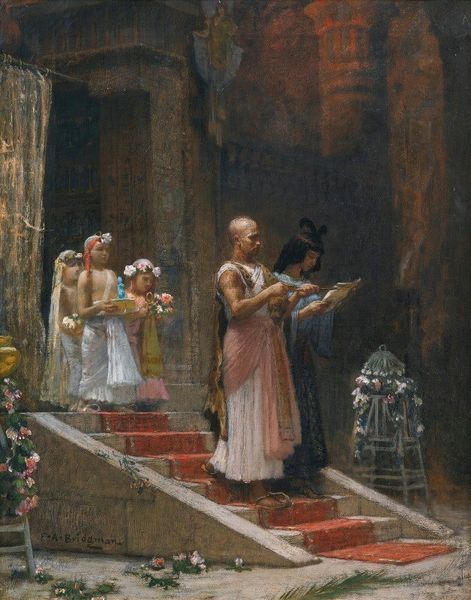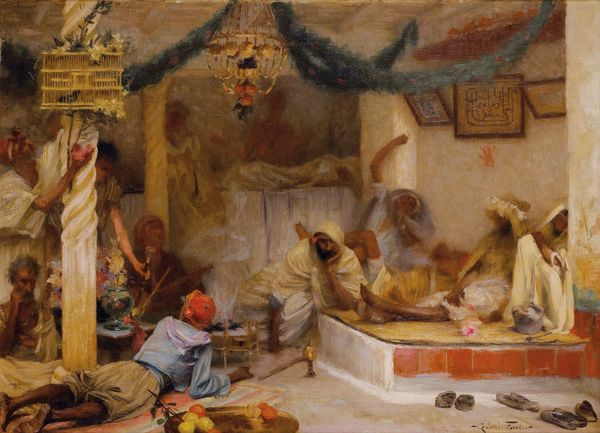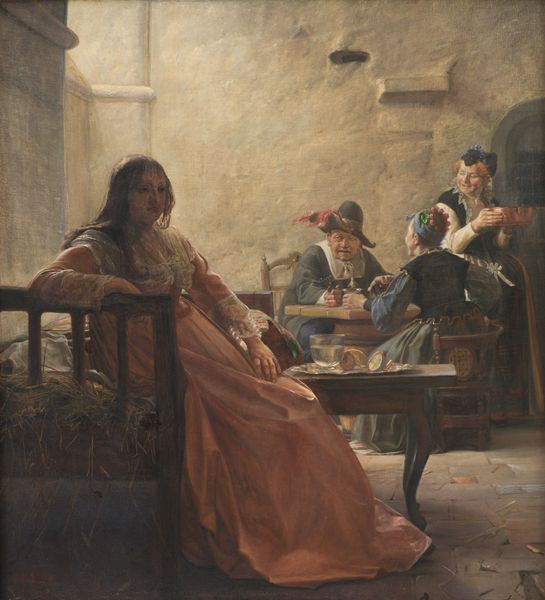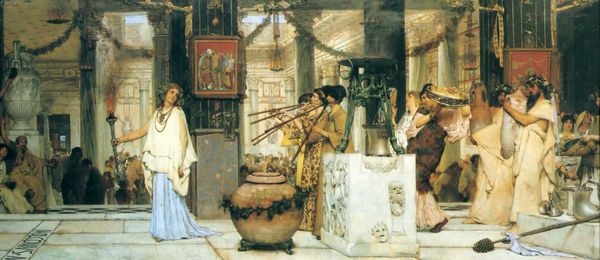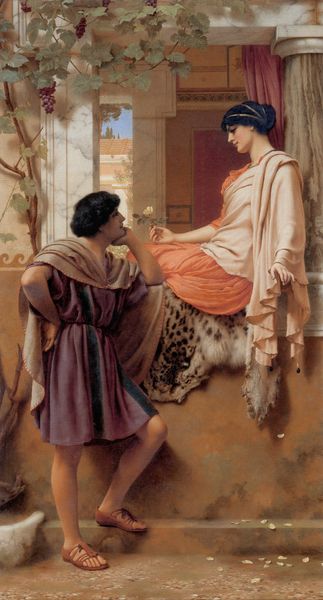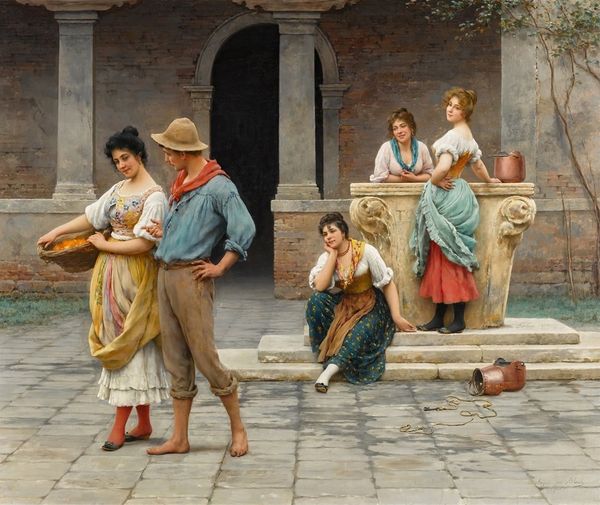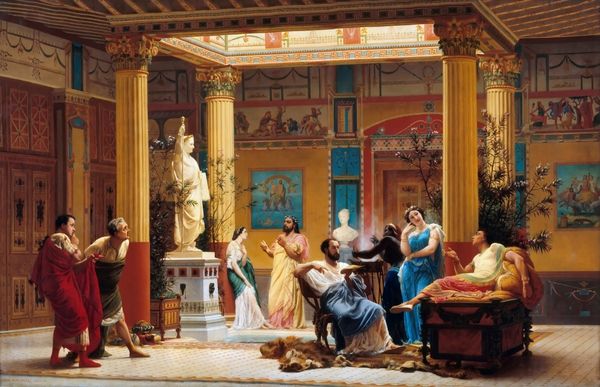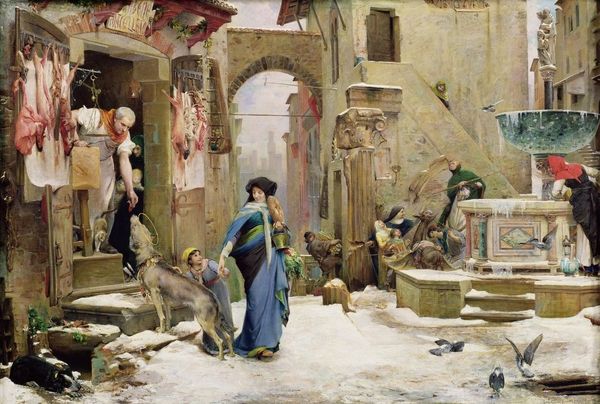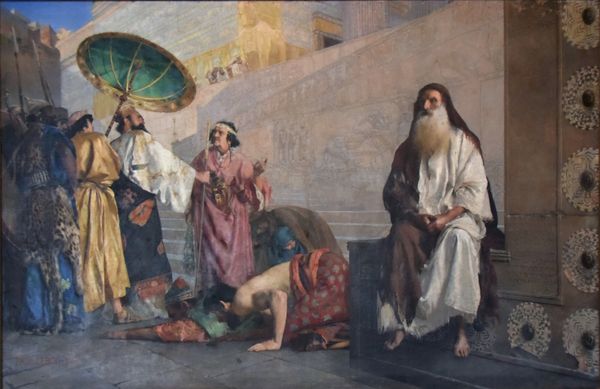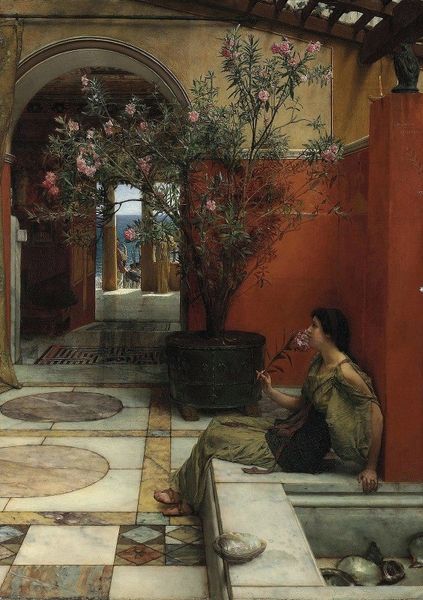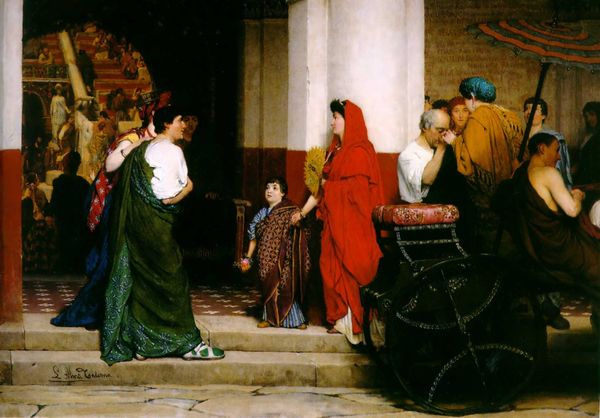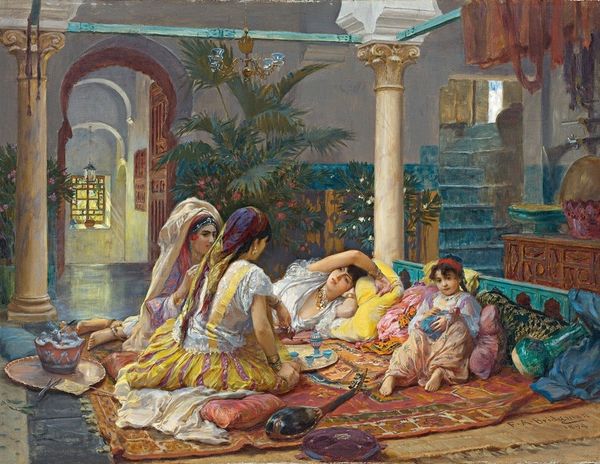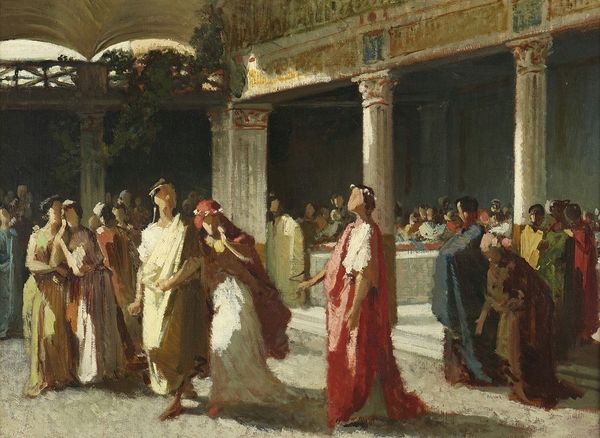
painting, oil-paint
#
portrait
#
gouache
#
figurative
#
neoclacissism
#
painting
#
oil-paint
#
figuration
#
oil painting
#
underpainting
#
painting painterly
#
genre-painting
#
history-painting
#
academic-art
Copyright: Public Domain: Artvee
Jean-Léon Gérôme painted ‘Atelier De Tanagra’ to capture a scene of women crafting Tanagra figurines, small terracotta sculptures, which were very popular in the Hellenistic period. Made in 1890, this painting emerged during the Belle Époque in France, a time of optimism marked by peace and prosperity. Yet, it was also a period when traditional artistic values faced new challenges from emerging avant-garde movements. Gérôme, a staunch academic painter, looked to the past for inspiration, but he presented the past as a mirror reflecting contemporary societal concerns. What do we make of the woman carefully painting the figurines? Is Gérôme celebrating female artistry or is he reinforcing gendered roles? The classical setting is not just an exercise in historical reenactment but also an exploration of gender, labor, and class. There is a tension here: while the painting valorizes classical beauty and artistic skill, it also hints at the commodification of art and labor. It is difficult to view ‘Atelier De Tanagra’ without questioning the cultural values it upholds and the societal norms it reflects.
Comments
No comments
Be the first to comment and join the conversation on the ultimate creative platform.
